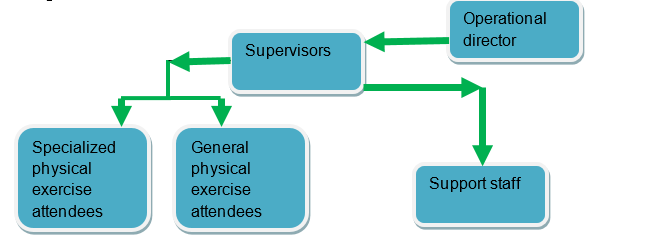Technology Plan
Technology in Use
Y Health and Wellness Studio business has integrated software and hardware technological devices to support its service delivery to its clients, who are young children. The hardware components include mobile phones, tablets, and computers with physical exercise apps installed in them. The company has also subscribed to fiber optic services to facilitate the display of cycling exercise videos to young clients. The main software components are communication apps, pulsating beat apps, and automated exercise reminder apps (Ang, 2014).
Significance of Mobile Devices
The hardware components are mainly used to facilitate indoor cycling exercise programs since the relevant apps are installed on these mobile devices. The software components facilitate direct interaction with clients since these apps allow clients to see a display of different cycling exercises from the screens of these mobile devices (Ang, 2014). These technological devices have improved efficiency and optimized the internal and external physical exercise training sessions.
Customer and Technology
Customers find these technological devices effective since they are able to see the physical exercises display as the instructor demonstrated. Moreover, customers use these devices to refresh memory even when at home. In addition, the online platform allows customers to contact the physical exercise instructor at any time, even when at home (Ang, 2014).
Staff and Technology
The 24/7 support makes staff movement unlimited since customers are able to access the company services by making a call, after which staff may avail him or herself to serve this client. Moreover, customers may engage the staff in a live chat.
Management and Organization
Management Team
The management team comprises an operational director, who is the owner of the company. Under this director are two supervisors managing the physical exercise team and other support employees.
Management Structure
The company has adopted the inverted triangle management paradigm. This model is characterized by empowering employees to take many responsibilities while the directors are only limited to goal setting and leadership functions. Moreover, the inverted triangle model defines a chain of command for managing employees against present duty standards (Abd-El-Salam, Shawky, & El-Nahas, 2013).
Organizational Chart

Social Responsibility
Company and the Community
Y Health and Wellness Studio business has put down corporate social responsibility initiatives in order to be a good citizen in the community. These initiatives include physical exercise coupons, mobile clinics for healthy living, and free maintenance of the outdoor cycling public park. Y Health and Wellness Studio business participate in the community through physical exercise equip donation to support elementary schools and children’s hospitals.
As a corporate social responsibility policy, the company has set the donations to community support initiatives at 4% of its annual net profit. This percentage translates to about $5,000 per annum. In order to ensure that the community support projects are well executed, Y Health and Wellness Studio have set up a corporate engagement office consisting of two employees (Searcy & Buslovich, 2014).
Moreover, selected employees are allowed to participate in these initiatives on paid time, depending on the magnitude of each project. Since the company is a physical exercise service provider, Y Health and Wellness Studio’s donations are in the form of goods bought from other companies. Some of these products include free exercising attire and sports equipment. The donations depend on the annual performance of the business.
Environmental Sustainability
Y Health and Wellness Studio business has put in place environmental sustainability practices such as sustainable reporting, pollution control, and ethical resource utilization. These practices are in place to govern the company’s operational framework in line with the local and international environmental protection and sustainability requirements (Searcy & Buslovich, 2014). For instance, the company only uses paperless materials such as tablets and screens in service provision during indoor physical exercise sessions. All exercise manuals are also distributed in soft copy. This policy is aimed at transforming the company into a paperless organization.
References
Ang, L. (2014). Integrated marketing communications: A focus on new technologies and advanced theories. Cambridge, United Kingdom: Cambridge University Press.
Abd-El-Salam, E.M., Shawky, A.Y., & El-Nahas, T. (2013). The impact of corporate image and reputation on service quality, customer satisfaction and customer loyalty: Testing the mediating role. Case analysis in an international service company. Journal of Business and Retail Management Research, 8(1), 130-153.
Searcy, C., & Buslovich, R. (2014). Corporate perspectives on the development and use of sustainability reports. Journal of Business Ethics, 121(2), 149-169.